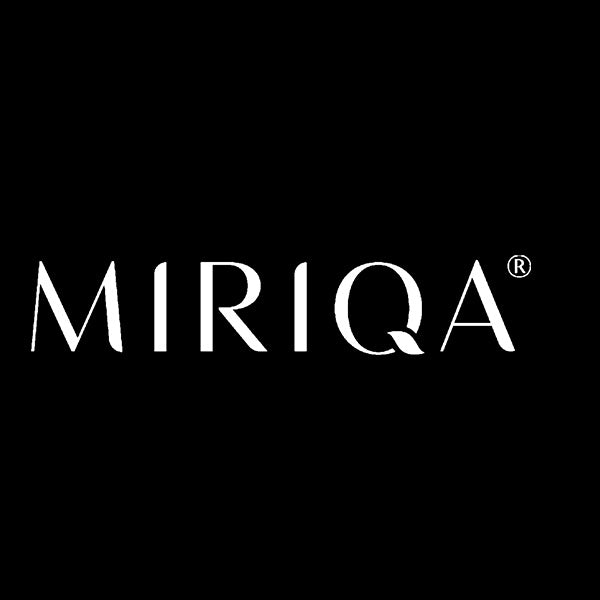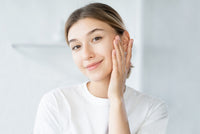Hair Loss in Your 20s: Causes and Solutions with Hair Growth Serum
Concerned about hair loss? Experiencing hair loss in your 20s can be particularly distressing, as it is often a time associated with growth, vitality, and self-discovery. Understanding the underlying causes of hair loss and seeking early intervention can make a significant difference. Whether it's due to genetics, hormonal changes, stress, or nutritional deficiencies, taking proactive steps towards hair care and treatment can help mitigate the effects and promote healthy hair growth.
Defining Hair Loss
Hair loss, medically known as alopecia, refers to the reduction of hair density on the scalp. It can manifest as thinning, bald patches, or extensive hair fall.
 Androgenetic Alopecia Telogen Effluvium Alopecia Areata
Androgenetic Alopecia Telogen Effluvium Alopecia Areata
Types of Hair Loss
1. Androgenetic Alopecia
Androgenetic Alopecia (AGA), or male pattern baldness, is the most common type of hair loss. It is predominantly due to an excessive response to androgen, leading to bitemporal thinning of the frontal scalp and then vertex. Though it most often occurs in adult males, women can also experience a milder form.
Female pattern hair loss (FPHL) usually presents with preservation of the frontal hairline with widening of the part line and reduced hair volume. The Ludwig Classification is often used to describe FPHL, with Type I being minimal thinning and Type III being diffuse thinning with a see-through appearance on the top of the scalp.

2. Telogen Effluvium
Telogen Effluvium is characterised by the excessive shedding of hair, typically as a diffuse thinning across the scalp, especially at the temples and hairs appear to be short and lacking melanin. It is a noninflammatory alopecia, usually of sudden onset triggered by physical or emotional stress, hormonal changes, or medication. Patients can lose up to 500 hairs a day, which is 2 to 3 times more than the usual hair loss in a healthy individual.
3. Alopecia Areata
Alopecia Areata (AA) is a nonscarring, autoimmune inflammatory disease that manifests in the hair follicles. AA presents as one or more coin-sized patches of alopecia that is most commonly seen on the scalp. Some people may also experience pitting or other changes in their fingernails or toenails.
Why Hair Loss Happens in Your 20s
Genetic Predisposition
Genetics factors, such as variations in certain genes, can predispose individuals to hair loss by influencing hormone sensitivity and hair follicle health:
- The androgen receptor gene (AR) is closely linked to hair loss. Androgens, particularly dihydrotestosterone (DHT), bind to receptors in hair follicles, causing them to shrink. Variations in the AR gene increase follicle sensitivity to androgens, leading to thinner, shorter hairs and eventually, no hair production.
- The 20p11 gene produces a protein called prostaglandins (PDG2), which has been shown to inhibit hair growth. Variations in the 20p11 gene can lead to increased production of PDG2, contributing to hair loss.
Hormonal Imbalances
Several hormones lead to hair loss as a result of their role in the hair growth cycle:
- Androgens: Particularly testosterone and dihydrotestosterone binds to androgen receptors in hair follicles, causing them to shrink resulting in thinner, shorter hair and eventually hair loss.
- Thyroid hormones: When the thyroid gland produces insufficient or excess thyroid hormones, it disrupts the hair growth cycle. Patients may experience diffuse hair thinning across the scalp, hair that is dry and brittle and increased hair shedding
- Cortisol: Often referred to as the “stress hormone”, cortisol levels rise when you feel stressed, worried, fearful, or anxious. Elevated cortisol levels disrupt the hair growth cycle by pushing hair follicles from the growth phase prematurely into the resting phase, leading to increased hair shedding
- Oestrogen: A key hormone in the female body, it influences hair growth in various life stages, particularly during pregnancy, menopause and while using certain hormonal contraceptives. Oestrogen binds to receptors on hair follicles and boosts the growth phase. This is why many women might notice thicker and better-looking hair during pregnancy while the decrease in oestrogen during menopause leads to gradual hair thinning. Certain birth control pills may cause hair follicles to leave the growth phase prematurely, leading to prolonged periods in the resting phase and noticeable hair shedding.
Nutritional Deficiencies
A balanced diet with essential nutrients also plays a crucial role in maintaining healthy hair. Keratin and vitamins like B (biotin), and E (tocopheryl), along with minerals (e.g. zinc, iron) and herbal extracts (e.g. Saw Palmetto Berries, Ashwagandha) are vital for hair growth and strength. Insufficient intake of these nutrients can lead to brittle hair, hair thinning, and hair loss. Incorporating a variety of fruits, vegetables, lean proteins, and whole grains ensures that your body and hair receive the nutrients it needs to thrive.
Stress and Lifestyle Factors
Role of Mental Health
Chronic stress and mental health issues can disrupt the hair growth cycle, resulting in hair loss.
Sleep and Exercise
Adequate sleep and regular exercise are crucial for maintaining hormonal balance and reducing stress, thereby supporting hair health.
External Factors
Environmental Stressors
Exposure to pollutants, harsh weather, and chemical treatments can damage hair and contribute to hair loss.
Hair Styling Practices
Frequent use of heat styling tools, tight hairstyles, and harsh hair products can weaken hair and cause breakage.
Common Treatments and Solutions
Experiencing hair loss can sure be distressing, but rest assured! These are several effective treatments and solutions available for healthy hair.
Healthy Lifestyle Changes
Adopting a healthy lifestyle is the first step in addressing hair loss. Here are some tips to promote hair health:
- Balanced Diet and Supplements - Incorporate a balanced diet rich in essential vitamins and minerals, particularly Vitamin B (e.g. organ meats, eggs, fish), Vitamin E (e.g. nuts, seeds), biotin and increase your intake of proteins.
Regular Exercise - Regular physical activity improves blood circulation, including to the scalp, which helps to nourish hair follicles.
- Stress Management - Practise stress-reducing techniques such as yoga, meditation, and deep-breathing exercises and have adequate sleep to keep cortisol levels in check
Medical Treatments and Therapies
When hair loss becomes a concern that over-the-counter treatments and home remedies can’t alleviate it, do not be afraid to seek the expertise of a trichologist. Trichologists are specialists in the science of human hair, trained to diagnose and treat a wide range of hair and scalp disorders.
Topical and Oral Medications
- Minoxidil: The most common topical treatment for alopecia androgenetic it is available over-the-counter in various strengths which prevents the progression of hair shedding and improves hair density and thickness
- Finasteride: As an oral medication that works by inhibiting the enzyme 5-reductase that converts testosterone to DHT, finasteride is particularly effective in preventing hair loss at the crown and the middle of the scalp.
Hair Growth Serums and Treatments

- Hair growth serums, such as MIRIQA® Keep It Healthy Hair Serum 100ml, contain active ingredients that nourish hair follicles and promote growth. Trusted by hair care professionals and consumers, MIRIQA® Keep It Healthy Hair Serum is meticulously formulated with a blend of nourishing ingredients, MIRIQA® Keep It Healthy Hair Serum revitalises your hair follicles from the roots, encouraging healthier and stronger hair growth.
Advanced Therapies: PRP, Laser Therapy
- Follicular Unit Transplantation (FUT): Also known as the strip method, FUT removes a strip of skin from the back of the head and dissects it into individual grafts.
- Follicular Unit Extraction (FUE): In this method, each follicular unit is extracted directly from the scalp and then transplanted to the recipient site.
- Platelet-rich plasma (PRP) therapy and low-level laser therapy are advanced treatments that can stimulate hair growth and improve hair density.
Try MIRIQA® Hair Supplement and Serum, the best combination!

MIRIQA® Hair is specially formulated to address various hair concerns, particularly hair loss due to stress, genetics, or nutritional deficiencies. Here’s an overview of the key benefits of incorporating MIRIQA® products into your hair care regimen:
Key Ingredients and Their Effects
Crafted with natural ingredients such as tocopheryl, biotin, keratin and collagen, each ingredient is clinically-proven to effectively reduce hair loss, stimulate hair growth and enhance hair strength, making it a 100% drug-free solution for healthy and thicker hair.
Revitalize your hair with Miriqa's Keep It Healthy Hair Serum. This lightweight serum is designed to nourish your scalp and strengthen your hair, leaving it looking healthy, voluminous, and full of life. Perfect for all hair types, this serum is your go-to solution for maintaining beautiful, healthy hair every day.
Key Ingredients:
- Biotin: Promotes hair strength and growth, reducing breakage.
- Argan Oil: Rich in essential fatty acids and vitamin E, helps to moisturize and add shine.
- Aloe Vera: Soothes the scalp, reducing dandruff and promoting a healthy environment for hair growth.
- Vitamin B5: Nourishes and strengthens hair, improving its overall texture and elasticity.
- Keratin: Repairs damaged hair, restoring its natural shine and smoothness.
 The combination of MIRIQA® Keep It Healthy Hair Serum and MIRIQA® Hair Extra Strength Professional Nutrition Supplement (Clinic-Exclusive) gives the optimal results for hair health and growth.
The combination of MIRIQA® Keep It Healthy Hair Serum and MIRIQA® Hair Extra Strength Professional Nutrition Supplement (Clinic-Exclusive) gives the optimal results for hair health and growth.

An additional option to consider is the Miriqa Hair Extra Strength Professional Nutrition Supplement.
Whether your hair loss is caused by stress, hormones, nutrition or ageing, MIRIQA® Hair Extra Strength Professional Nutrition Supplement is power-packed with all the clinically proven nutraceuticals to deliver growth, in extra doses – Tocotrienol, Tripeptide Collagen, Saw Palmetto Berries, Keratin Forte, Biotin, to tackle all causes at its root.
Additionally, it is loaded with two additional star ingredients:
- KSM-66 Winter Cherry: The World’s best winter cherry with the most extensive research done and is clinically proven to reduce cortisol level and build resistance to stress, which helps enhance and promote better hair growth
- Curcumin Bio-max: Helps reduce DHT formation and works synergistically with Saw Palmetto Berries to address shrinking of hair follicles, promoting thicker hair shafts
Usage Guidelines and Expected Results
With regular and consistent use, MIRIQA® Keep It Healthy Hair Serum and MIRIQA® Hair Growth Supplements can help reduce shedding, hair thinning and support the regrowth of thicker, fuller hair.
Seeking Professional Help
When hair loss becomes a concern that over-the-counter treatments and home remedies can’t alleviate it, do not be afraid to seek the expertise of a trichologist. Trichologists are specialists in the science of human hair, trained to diagnose and treat a wide range of hair and scalp disorders.
When to Consult a Specialist
If you notice significant hair loss, bald patches, or thinning, consult a dermatologist or trichologist for a thorough evaluation and personalized treatment. Early intervention can prevent further hair loss and identify underlying issues. Seek help if:
- Hair shedding increases rapidly.
- Bald spots or patchy hair loss appear.
- Your hairline recedes noticeably.
- Thinning hair worsens progressively.
- You have a family history of hair loss.
Diagnostic Tests and Evaluations
Specialists may recommend these tests to determine the cause of hair loss:
- Blood Tests: Check for thyroid disorders, anemia, and hormonal imbalances.
- Scalp Biopsy: Examine scalp tissue for conditions like alopecia areata.
- Hair Pull Test: Assess the severity of hair shedding.
- Dermatoscopy: Magnify scalp and hair follicles to identify patterns and scalp conditions.
- Hormonal Profile: Identify hormonal imbalances, especially in women.
Early diagnosis and intervention are crucial for effective treatment and healthy hair growth.
Preventative Measures for Hair Loss
Taking action against hair loss at the earliest signs allows for timely intervention and it can make a significant difference in the treatment of hair loss. Here are some tips for maintaining a healthy scalp and hair.
Regular Scalp Care
A healthy scalp is the foundation for healthy hair growth and regular scalp care involves several practices that can help maintain an environment conducive to hair growth:
- Wash hair regularly: Regular washing of your scalp with a gentle shampoo removes dirt, excess oil and product buildup that can clog hair follicles
- Moisturise: Especially in Singapore’s climate, your scalp’s natural oils are not always enough to keep it hydrated. Use moisturising hair serums or conditioners that keep your scalp well-hydrated so that it is less prone to flaking and itching
- Protect from the Sun: Protect your scalp by wearing a hat, avoiding the sun during the day or use scalp-friendly sunscreen to protect it
Choosing the Right Products
Selecting the appropriate hair care products is essential for maintaining hair health and preventing further hair loss. Here are some tips to help you make the best choices:
- Look for gentle formulas: Choose sulphate and paraben-free shampoos and conditioners. Sulphate can strip your hair of its natural oils, leading to dryness and breakage. Hair dyes can also cause damage, so opt for gentler alternatives or minimise the use of chemical products
- Consider product ingredients: Look out for products that contain ingredients known to support hair health, such as biotin, tocopheryl and keratin. These nutrients can help strengthen your hair and promote growth
Avoiding Harmful Habits
- Avoid using heat on hair: Due to the heat, hair styling tools can denature the keratin protein structure of the hair shaft and turn the water in the hair shaft into steam, hair breaks easily. Minimise the use of blow dryers, straighteners, and curling irons to protect your hair from heat damage
Don't let hair loss in your 20s hold you back!
Hair loss can be a challenge, but it doesn’t have to define you. Understanding the causes and taking early action can turn the tide in your favour. Embrace a lifestyle that supports strong and healthy hair by unlocking the potential of MIRIQA® Keep It Healthy Hair Serum, together with MIRIQA® Hair Growth Supplements.
Ready to transform your hair care routine? Take control of your hair loss journey today! Visit our website to learn more and find the perfect solution for your hair needs. Don’t wait – take the first step towards a brighter, more confident you.
Ready for a fuller crown?
Get MIRIQA® Hair Professional Hair Nutrition Supplement at S$128.





